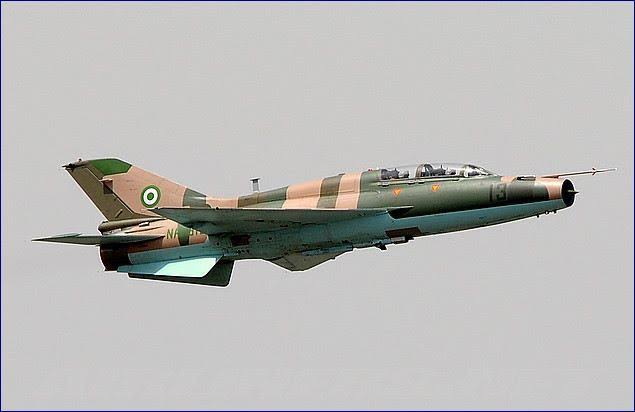A Major Day in Military History: Ukraine's Drone Blitz Today Echoes the Boldness of Israel's 1967 Strikes
On the morning of June 5, 1967, Israel launched Operation Focus—a preemptive strike that rewrote the playbook of modern war. In under two hours, the Israeli Air Force destroyed 338 Egyptian aircraft, most still on the ground. By day’s end, the toll had climbed to over 450 Arab aircraft—from Egypt, Syria, Jordan, and Iraq. Israel lost only 19 planes. The skies were cleared, and the course of the war was irreversibly altered.
This morning—June 1, 2025—Ukraine may have just written its own chapter in that same tradition of strategic audacity.
In a stunning and still-unfolding operation, Ukraine reportedly executed a multi-pronged drone assault deep inside Russian territory, targeting airbases that host the Kremlin’s long-range bomber fleet, including the Tu-95 and Tu-22M3—the same bombers that have launched countless cruise missiles at Ukrainian cities over the past two years. Early assessments indicate at least 40 Russian strategic bombers were damaged or destroyed.
But it is the method of the attack that elevates this strike to the realm of military history.
Ukraine used trucks disguised with standard shipping containers—modern-day Trojan Horses. Once across the border, the containers opened—not with weapons fire, but with silence. Inside were AI-enabled autonomous drones designed to hunt, prioritize, and destroy high-value targets. These drones reportedly used real-time decision-making algorithms to identify vital and vulnerable points on the aircraft and strike with deadly precision.
And in a final twist, the containers themselves were rigged to self-destruct after the drones launched, destroying evidence and inflicting further damage. A Trojan Horse that not only released its hidden strike force—but then collapsed the gates behind it.
This wasn’t merely a drone raid. It was a meticulously orchestrated deep strike on Russia’s crown-jewel air assets, executed without a single Ukrainian aircraft visibly crossing into Russian airspace.
This marks the largest single-day destruction of Russian military aircraft since Operation Barbarossa in 1941, when Nazi Germany launched its surprise invasion of the Soviet Union. On June 22, 1941, the German Luftwaffe destroyed between 1,200 and 2,000 Soviet aircraft on the ground in just hours—crippling the Red Air Force before it could take flight. Since that day, no single strike has inflicted such concentrated losses on Russian or Soviet aviation. The reported destruction of at least 40 strategic bombers—representing up to one-third of Russia’s long-range bomber fleet—is unmatched in the post–World War II era. Not in the Cold War, Afghanistan, Chechnya, Syria, or even the early years of this war has Russia suffered an airpower loss on this scale. And unlike in 1941, this strike came not from a peer state’s air force, but from a drone-enabled ambush launched by a nation under siege, using autonomy, deception, and resolve.
To grasp the scale of this blow, consider the cost: a single Tu-95 “Bear” bomber—designed to carry nuclear or cruise missiles—can cost up to $150 million. Russia’s newer Tu-160 “Blackjack” bombers, also stationed at these bases, cost more than $250 million apiece, with program and infrastructure costs pushing the total value of the strategic bomber fleet into the billions of dollars. The bombers struck today aren’t just expensive—they represent long-range deterrence, psychological leverage, and deep-strike capability. Ukraine may have just degraded one of Russia’s most strategic military assets at a fraction of the cost.
And this strike is not without precedent.
It echoes an equally audacious and recent Israeli operation in its ongoing war with Hezbollah: the booby-trapped pager and walkie-talkie campaign. After years of surveillance and technical penetration, Israeli intelligence created shell companies, designed websites, and covertly sold Hezbollah discounted communications gear—pagers and walkie-talkies indistinguishable from the real thing, but rigged with paper-thin explosives. Israel had not only penetrated Hezbollah’s logistics chain, it had embedded kill switches directly into the enemy’s hands.
Then, at a time of Israel’s choosing, the devices were remotely detonated simultaneously across wide geographic areas, killing mid-level Hezbollah commanders and sowing panic. The operation kicked off a crushing, intelligence-led decapitation air campaign, culminating in the targeted killing of Hezbollah’s leader, Hassan Nasrallah.
Israel’s Operation Focus in 1967, its pager operation against Hezbollah, and Ukraine’s drone ambush today are separated by decades, geography, and technology—but united by three timeless elements: superior intelligence, operational innovation, and strategic audacity. Each demonstrated how a smaller, threatened nation can out-think, outmaneuver, and out-strike an adversary that assumes safety through size, geography, or technological superiority.
And each deserves its place in military history—not just for the damage inflicted, but for what they represent: the elevation of brain over bulk, of precision over panic, and of creativity in the face of existential threat.
Whether today’s strike proves to be a war-turning moment remains to be seen. But one thing is already certain: Ukraine has just joined Israel in the ranks of those who have made history by refusing to wait for disaster before delivering decisive blows.












